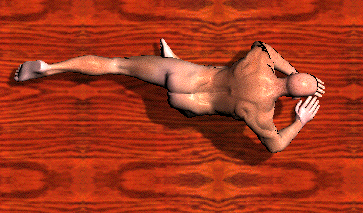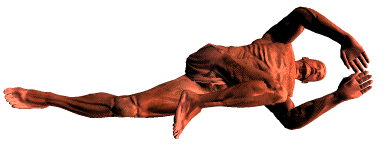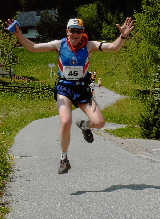Running Injuries Past and Present Injuries I am very lucky not to suffer from too many injuries despite the high mileage I do. I have had two significant injuries or conditions in more recent years. These are: Past Injuries  Achilles Tendon - 2000 - No problems persisting Achilles Tendon - 2000 - No problems persisting
 Piriformis Syndrome - 2004 to 2007 - No problems persisting Piriformis Syndrome - 2004 to 2007 - No problems persisting
Current Injuries  None at present - But never get complacent! None at present - But never get complacent!
Achilles Tendon While training for the 2000 New York Marathon I ran a long, 16 mile trail run in a pair of trail shoes. The shoes had not given me any problem on earlier, shorter runs but as this was a particularly long run the heel counter rubbed my Achilles to the extent that it caused damage and bruising to the tendon sheath. Further training and a subsequent New York Marathon run a month later destroyed the Achilles completely. On the upside I managed to complete the New York Marathon in an excellent 3.08 time but I was laid up for three months following! Physiotherapy treatment and TLC enabled me to get the tear fully repaired and the heel is now completely recovered. My physio recons that the heel is probably stronger than it was before, the repair tissue after injury is supposed to be stronger and more resilient. Needless to say, the trail shoes went in the bin and I am now very careful choosing shoes that have high heel counters. Piriformis Syndrome This is a condition rather than an injury and I regard it as a complete pain in the butt! The Piriformis muscle sits behind each buttock and joins the bottom of the pelvis to the to top of the femur. It is a very small muscle and assists in the sideways rotation of the leg. Therefore it is not really used a great deal when running. In 15% of adults the sciatic nerve passes through the Piriformis. If the muscle becomes tight then it grips the nerve sending sciatic pain down the leg, into the groin and around the buttock area. I find this happens during and following walking, running or prolonged sitting in a car. I find it kicks in at 5 to 6 miles and persists until around 22 miles when it remarkably starts to fade away. It will then return after a race for up to a couple of days. The best way of dealing with the problem is to stretch the muscle. However, it is a trick one to get to and it is so small. There are several ways of stretching but the most effective is detailed below. To advance this further I put my lower leg on a ledge or park bench allowing me to stretch it even more so. In the elevated position I can put my trailing leg and head and shoulders below body level thus advancing the stretch just that bit more. Piriformis stretch http://www.rice.edu/~jenky/sports/piri.html 

Cured! Solution Found - 2007 After three years of research, treatment and advice from a large number of different sources I have eventually overcome the Piriformis problem and now experience very little aggravation when I run any distance. The key solutions are summarised as follows:  Piriformis Stretch - keep the muscle well stretched Piriformis Stretch - keep the muscle well stretched
 Central core maintenance - in particular strengthening of Glutes and Adductors and Abductor muscles Central core maintenance - in particular strengthening of Glutes and Adductors and Abductor muscles
 Adopting 'POSE' technique - running on balls of feet minimising impact up the leg Adopting 'POSE' technique - running on balls of feet minimising impact up the leg
 Cross training - Fell Running, Cycling, Concept II Rowing, Swimming Cross training - Fell Running, Cycling, Concept II Rowing, Swimming
I no longer experience any pain during or post exercise so clearly one or more of the above solutions has worked well for me. I would say the core maintenance is the key. The Glutes control pelvis stability and if they are weak then the Piriformis will become over strained. Straight forward road running does not exercise the Glutes, adductors or abductors to the full - therefore additional gym maintenance is required to keep these important supporting muscles in good shape. It all makes sense! I would be happy to discuss with fellow runners the ins and outs of Piriformis Syndrome. There may be other ideas on how to manage this problem that I am sure effects many other runners out there.  E-Mail: Steve Broadbent E-Mail: Steve Broadbent
 
| 